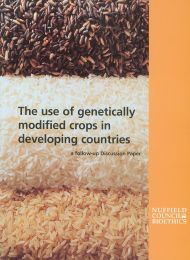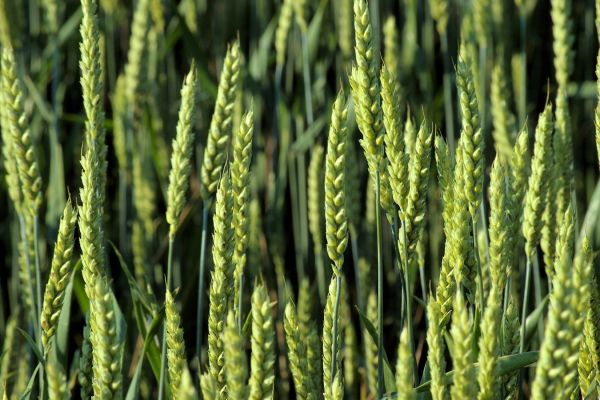The use of GM crops in developing countries
Report
Published 28/12/2003

Decisions about the development, planting and regulation of GM crops take place at many levels, from international regulations down to individual farmers. We outline the system of international governance applying to GM crops and highlight ethical and regulatory issues. We then discuss a number of specific challenges applying to developing countries:
Level of regulation
Developing countries have to ensure that their policies make sense in the context of their own development needs and also take account of the complex range of international regulations. Should decisions about the planning of GM crops be made at a local, regional or national level? We discuss the advantages and disadvantages of allowing decisions to be taken at a local level.
We conclude
We believe that the transfer of experience from advisory and regulatory bodies in developed countries to the developing world is urgently needed. It is important to develop the technical capacity and expertise to regulate the use of GM crops in developing countries. Local communities must be included as far as possible in processes of decision making, and balanced information must be provided.
Risk assessments
Undertaking risk assessments, both for health and environmental safety, entails considerable financial and logistical challenges. At present, few developing countries have the capacity for this.
We conclude
We feel the most appropriate approach would normally be a centralised and evidence-based safety assessment at the national or regional level. Environmental and health risks should be assessed on a case by case basis.
The impact of European and international trade policy
International controversies and European scepticism may deter those in developing countries from adopting GM crops. Additionally, EU policy is of considerable significance for developing countries that grow crops for export.
It would be extremely difficult for most developing countries to comply with strict EU requirements for traceability and labelling. Regulations propose that a GM crop must be traced throughout the entire production and distribution process. The threshold for labelling proposed is also very low: any food with more than 0.9% of an approved GM material, or 0.5% of an unapproved GM material, must be labelled. Many developing countries do not have the necessary infrastructure to meet these regulations. There is also concern that even planting GM crops purely for domestic use might jeopardise an export market for non-GM crops.
We conclude
The freedom of choice of farmers in developing countries is likely to be restricted severely by the agricultural policy of the EU. EU regulators have not paid sufficient attention to the impact of EU regulations on agriculture in developing countries.
Liability
It has been suggested that the multinational seed industry might exploit farmers in developing countries using GM crops, by providing lower quality seed. We are not aware of any such instances. It is clear that the same standards of liability need to apply to both developing and developed countries.
We conclude
Where there is clear evidence of damage attributable to the seed producer, compensation will need to be provided, regardless of whether the seed is GM or non-GM. Wherever possible, agreements between policy makers and the seed industry should be established, to facilitate compensation of smallscale farmers.
Food aid
In 2002, Zambia, Zimbabwe and Mozambique faced dramatic food shortages which threatened more than ten million people with starvation. However, their governments rejected donations of food aid from the US because it consisted of GM maize. Zimbabwe and Mozambique eventually accepted food aid in the form of milled GM maize, but the Zambian government did not. We explore this controversy, and the reasons behind it.
We conclude
We recommend that developing countries must be given a genuine choice between GM and non-GM food aid where possible. When developing countries prefer to receive non-GM grain, it should be purchased by the World Food Programme and other food aid organisations wherever possible. If only GM donations are available, and the concern is about risks to the environment rather than to health, food aid donations should be provided in milled form.

Share